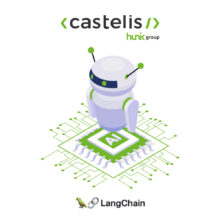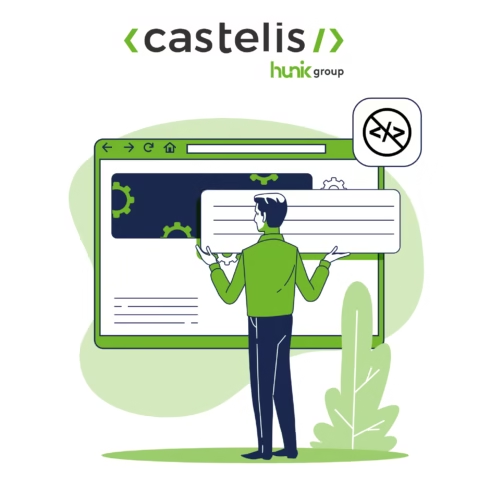
Comparison of full-stack code generators and no-code/low-code platforms
Full-stack code generators and no-code/low-code platforms are clearly reshuffling the deck when it comes to web and software development. Against this backdrop, it’s difficult to project with any certainty the future of the developer profession and the place it will occupy in the coming years. Never mind, developing solutions has been Castelis’ core business since 1998… Which is why it’s so important for us and our developers to get to grips with its tools, so that we know what we’re dealing with!
What’s certain is that, whether you’re a professional developer or an entrepreneur with no technical skills, these tools enable you to create complete applications with little or no code. While there’s still room for improvement, it’s no less impressive and promising. This guide offers a detailed comparison of the market’s leading no-code and low-code solutions.
What’s the difference between no-code platforms and code generators? How to choose the right tool?
1. Ease of Use and Accessibility
- User Interface (UI): Does the tool offer a user-friendly, intuitive visual interface?
- Learning Curve: Is it accessible to non-developers (no-code) or does it require technical skills (low-code)?
- Guides and Documentation: Are tutorials and resources available?
Example: Bolt.new is particularly suitable for entrepreneurs wanting to quickly test an idea without technical expertise, thanks to its intuitive interface and step-by-step video tutorials. MERN.AI, on the other hand, is aimed at experienced developers and requires an understanding of full-stack development concepts.
2. Code Generation Capability and Flexibility
- Code Quality: Is the code clean, optimized, and maintainable?
- Code Customization: Can the generated code be manually edited?
- Support for Frameworks: Does it support popular frameworks like React, Angular, Vue.js?
Example: Using Bolt.new, we quickly generated a presentation website with React and Node.js, and then customized the code for specific needs. However, Logical limits code editing, but makes it easy to quickly generate a ready-to-use landing page. This is very useful for marketing purposes to test things quickly and launch campaigns but less adoptable for a developer.
3. Full-Stack Feature Set
- Front-end and Back-end: Does it support both layers?
- Integrated Database: Does it provide database management solutions (PostgreSQL, MongoDB)?
- APIs and Integrations: Can it automatically generate or integrate REST or GraphQL APIs?
Example: MERN.AI is ideal for a developer building a full SaaS platform, including a REST API and a MongoDB database, whereas Logical is more suited for simple, front-end-only pages without a back-end.
4. Deployment
- One-click Deployment: Does the tool offer direct deployment from the interface?
- Automated Deployment: Is the process automated, or does it require manual configuration?
Example: Bolt.new allows direct deployment to Netlify, simplifying the quick launch of projects. In contrast, MERN.AI only offers code export for manual deployment on platforms like AWS or DigitalOcean. We like it when things are connected and properly integrated, so Bolt.new caught our attention. However, we also work a lot with Microsoft solutions, so MERN.AI impressed us as well.
5. Hosting Control
- Code Control: Is it possible to export the full source code?
- Hosting Freedom: Can you choose your own server or cloud provider?
Example: A developer wanting full independence will opt for MERN.AI for its full code export. This is often our case, as it gives us more freedom and flexibility to evolve the solution. On the other hand, an entrepreneur without technical skills would prefer Logical for its centralized cloud hosting. It’s perfect for quickly building a website, but for substantial changes, you’ll likely need to switch tools or restart the project.
6. Team Collaboration
- Version Control: Does it integrate with Git or a version control system?
- Real-time Collaborative Work: Does it offer co-editing features, comments, etc.?
- Roles and Permissions: Does it manage user roles and access?
Example: Replit Ghostwriter offers pair programming and collaboration features, allowing real-time coding with simplified project sharing. This is absolutely necessary when working in a web development agency, like us.
7. Integrations and Ecosystem
- Plugins and Extensions: Does it integrate with third-party tools?
- Pre-built Libraries and Modules: Does it offer reusable components or ready-to-use templates?
Example: Logical includes pre-built templates for e-commerce product pages, while Bolt.new allows importing third-party libraries like Tailwind CSS and custom NPM modules.
8. Performance and Scalability
- Handling Complex Projects: Can it handle large-scale projects?
- Optimized Code: Does the tool produce efficient, optimized code?
Example: Tools like MERN.AI or Replit are perfect for highly customizable, scalable solutions. Whereas Logical will be limited for complex or highly scalable applications.
9. Security and Data Management
- Data Protection: Is code stored on remote servers or exportable locally?
- Built-in Security Controls: Vulnerability scanning, secure authentication?
Example: For a project requiring GDPR compliance, Bolt.new offers secure hosting, while Logical stores data in its cloud without the possibility of advanced access management.
10. Business Model and Pricing
- Free vs Paid Version: Does it offer a free version?
- Limitations on Use: Restrictions on the number of projects, exports, or functionalities?
- Pricing per Project, User, or Subscription?
11. Use Cases and Target Audience
- Experienced Developers vs Beginners: Is it aimed at professional developers or non-technical users?
- Rapid Prototyping vs Complex Projects: Is it best suited to MVPs or complete applications?
Example: An entrepreneur looking to quickly test an idea for a booking application might use Logical, while a developer looking to build a complex SaaS platform might prefer MERN.AI.
Not sure which code generator to choose? Our experts are here to guide you to the best solution!
AI Code Generator Comparison: Bolt.new, MERN.AI, Logical, and Lovable.dev
| Criterion | Bolt.new | MERN.AI | Logical | Lovable.dev |
|---|---|---|---|---|
| Ease of Use | ✔️ Very simple (No-code) | ❌ Technical | ✔️ Very simple | ✔️ Very simple |
| Full-stack Capability | ✔️ React + Node | ✔️ MERN Stack | ❌ Front-end only | ❌ Front-end only |
| Code Customization | ✔️ Modifiable | ✔️ Modifiable | 🟡 Limited | 🟡 Limited |
| Deployment | ✔️ Integrated (Netlify) | ✔️ Exportable | ✔️ Cloud | ✔️ Cloud |
| Collaboration | 🟡 Basic | ❌ Limited | ❌ No | ✔️ Yes |
| Data Security | ✔️ Secure Cloud | ✔️ Exportable | ❌ Cloud Hosted | ❌ Cloud Hosted |
| Target Audience | 🟡 Developers & No-code | ✔️ Developers | ✔️ No-code | ✔️ No-code |
| Pricing | Freemium + Pro | Freemium | Freemium | Freemium |
Overview of the features of full-stack code generators and no-code/low-code platforms
Bolt.new
- Key functionality: Full-stack code generation with React and Node.js, natural language interface and visual prompts to simplify creation.
- Use case: Ideal for entrepreneurs wishing to quickly test a product idea or minimum viable prototype (MVP) without advanced technical skills.
- Notable difference: More accessible than MERN.AI and Logical, with a good balance between simplicity and customization.
MERN.AI
- Key functionality: Complete generation of full-stack projects with MongoDB, Express, React and Node.js.
- Use case: Perfect for experienced developers working on complex SaaS projects requiring full control over the code.
- Notable difference: More technical and advanced than Bolt.new, with a focus on projects requiring a complete architecture.
Logical
- Key functionality: No-code platform with simplified front-end generation and pre-built components.
- Use case: Suitable for non-technical entrepreneurs looking to quickly create a web page or visual prototype without advanced customization.
- Notable difference: Limited to the front-end and little flexibility compared to Bolt.new or MERN.AI.
Lovable.dev
- Key feature: No-code generator focused on quickly creating simple web pages with integrated hosting.
- Use case: Perfect for marketing campaigns, landing pages or simple projects requiring little customization.
- Notable difference: Less suited to complex projects, but offers an ultra-simplified experience for quick projects.
Conclusion: Which generator to choose?
For rapid prototyping and non-developers: Logical, Lovable.dev.
For a 100% no-code experience: Logical, Lovable.dev.
For professional developers: MERN.AI, Bolt.new.
For flexible and modifiable full-stack projects: Bolt.new, MERN.AI.
Overall, we can summarize by saying that for landing pages and quick access to the market, no-code tools are there. On the other hand, as soon as we need more advanced features, more in the order of a business application for example, we must move on to more flexible but also more technical solutions. That said, I saw a very resourceful building craftsman in IT build his personalized ERP on Notion, so, when you have consistency in your ideas, you must be able to work miracles!
Voir plus de Actualités
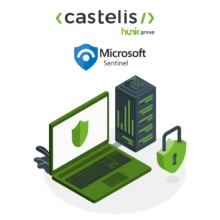
Why Microsoft Sentinel is Essential for Cyber Threat Management: A Practical Guide for CIOs
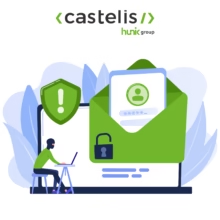
Top best practices to improve email security with DMARC
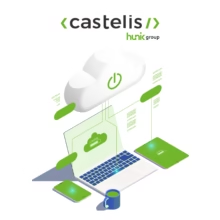
Cloudflare Zaraz Guide: Manage your third-party scripts at the Edge for better web performance
